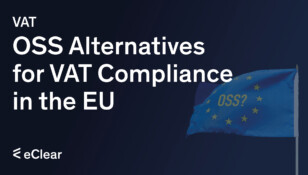1. Reminder: Basic Principle of the IOSS
The IOSS covers imports with a value of up to €150 that are sold to consumers within the EU. The seller charges the VAT of the destination country at the time of purchase and reports it collectively for all EU destination countries via the IOSS system1. Customs clearance is simplified because the goods are already “taxed” for VAT purposes at the time of supply.
2. When Goods Are Returned
If goods are returned — for example, because the consumer exercises their right of withdrawal or the goods are defective — the question arises: what happens to the VAT already declared and remitted to the local Treasury?
The good news:
A return results in a subsequent reduction of the taxable amount2. This means the seller can adjust the VAT previously declared under IOSS, provided the customer has actually been reimbursed for the purchase price (including VAT).
3. Practical Implementation within the IOSS
The correction is not made via a separate credit note in the IOSS portal, but rather by reporting it in the IOSS return for the period in which the return occurred.
In practice, this means:
- If the return occurs within the same reporting period as the initial sale, the transaction is either omitted from the IOSS return or reported with the corrected amount.
- If the return occurs in a later month, a correction referring to the original transaction must be included in the IOSS return for that later period.
Important:
The adjustment must be clearly documented in the IOSS records — for example, by referencing the original order or invoice. According to Article 369q of the VAT Directive and Section 22(1f) of the German VAT Act (UStG), such records must be retained for ten years.
4. Practical Tip
Businesses should ensure that their return and accounting processes are designed so that IOSS transactions can be clearly identified and corrections are properly documented. A clear data trail helps to avoid issues during audits by the tax authorities — especially when multiple EU Member States are involved.
1 Articles 369l to 369x of Council Directive 2006/112/EC (EU VAT Directive) and Section 18k of the German VAT Act (UStG).
2 In accordance with Article 90(1) of the EU VAT Directive (2006/112/EC) and Section 17 of the German VAT Act (UStG).







